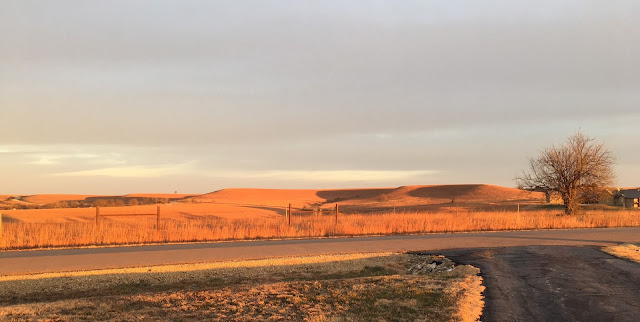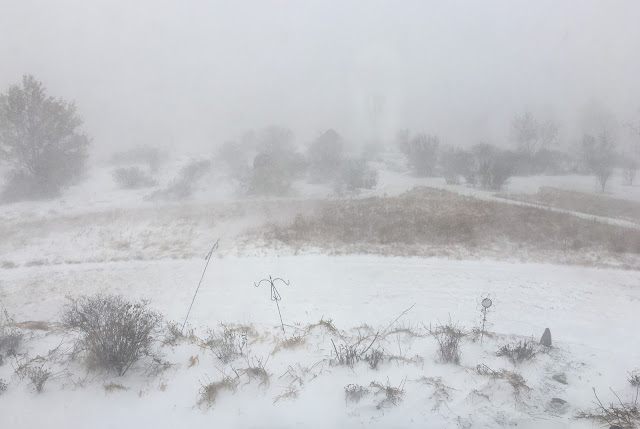 If you are wondering about the title, I'm shouting it in a tone similar to urging you to "push on," "plow through it," "soldier on," and so on. Because we don't really have any alternative during this seemingly ceaseless season of snow and suffering, do we?
If you are wondering about the title, I'm shouting it in a tone similar to urging you to "push on," "plow through it," "soldier on," and so on. Because we don't really have any alternative during this seemingly ceaseless season of snow and suffering, do we?My photo today is the most garden-ey thing I could find related to the outdoors right now; the salty paw print of my precious Bella as she pads back in from the salt-strewn pavement out our front door. It is pretty tough on Mrs. ProfessorRoush to see these paw-print-ey trails across her oak floors and likely the salt is tougher still on the sensitive toe pads of poor Bella.
The rest of my garden is still in the deep freeze. Here in Kansas, on February 19th, we've had 20.6 inches of snow already this winter, with 3-5 more predicted tonight and two more days of snow in the ten-day forecast. It does melt off between snows here, with the result of leaving the gravel road leading to the house in the worst condition of the entire time I've lived here. Still, our average snowfall by this time each year is 13 inches according to the KMAN news article I linked to. Yes, I know, that the 58% increase in snow to this point is JUST WEATHER, not global climate COOLING. Keep telling yourself that for another few years. All this gardener knows is that this time last year, I was outside on the weekends clearing garden beds in shirtsleeve weather.
ProfessorRoush, he just keeps staring from the windows this year, primarily assessing whether the straw over the strawberries is still undisturbed and counting the upended garden ornaments in his back garden. Sooner or later, I suppose the weather will warm and we will receive sunshiny hope again. After all, I've seen bluebirds looking for nesting sites recently.
I know I haven't been writing much, but I have resolved, in my discontented winter's mood, to try something new this year in the blog; shorter, quicker updates on a more daily basis during the growing season with the goal of placing you beside me whenever I putter back into the garden. A Growing Season in the Life of ProfessorRoush, as it were, beginning whenever the weather warms enough for the ground to thaw. You'll have to let me know sometime if you liked it.












